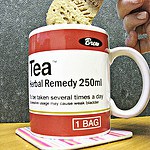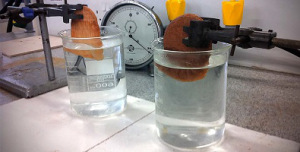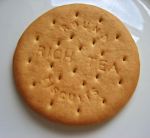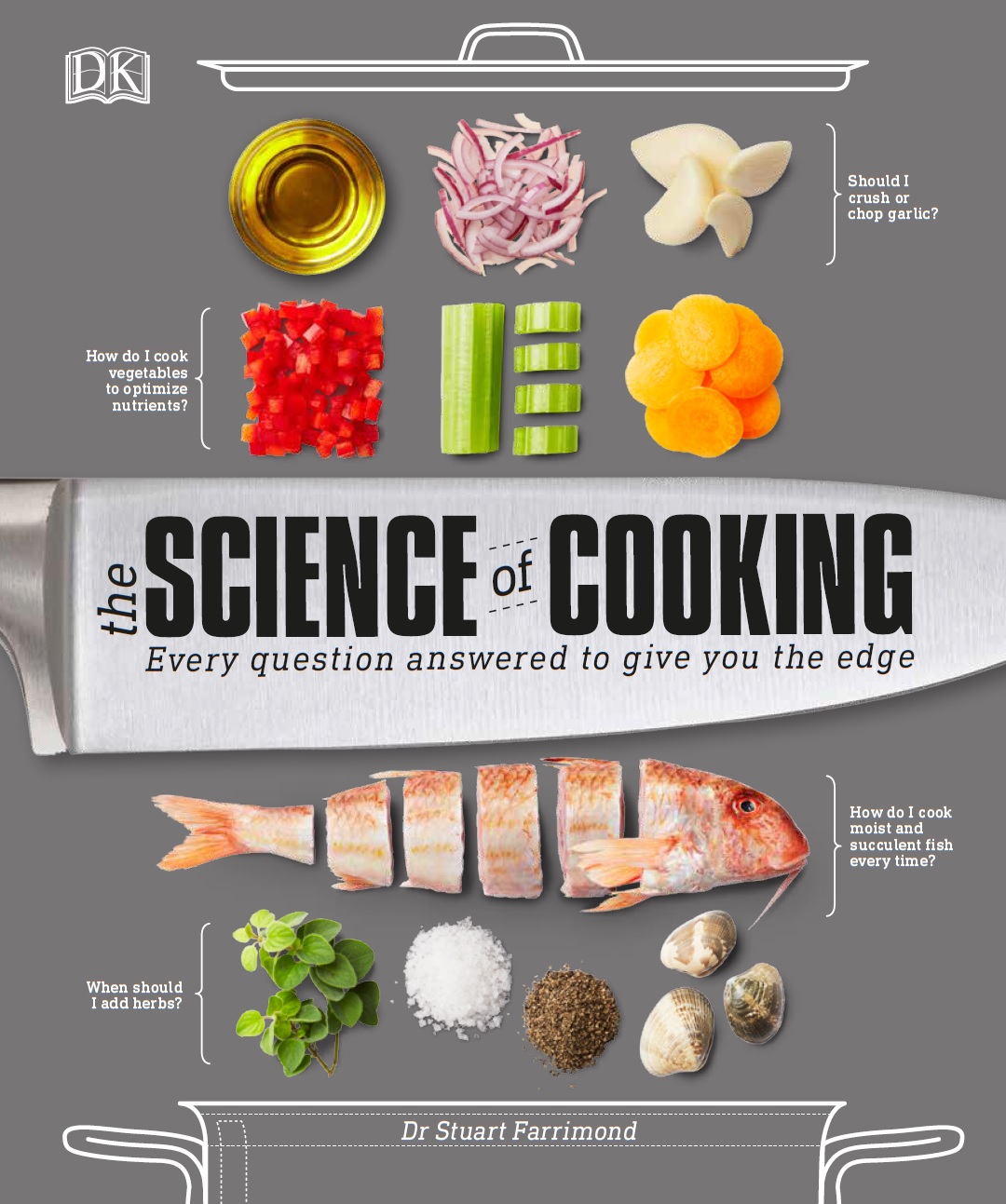 Go on, admit it: you love doing it. Every morning at 11 O’clock, tens of thousands of people prise open the biscuit tin to get ready to do some dunking. It’s a worldwide tea break curiosity that has existed to since the dawn of the sweet baked treat. In America, they do it with doughnuts, while South Africans like to use rusks.
Go on, admit it: you love doing it. Every morning at 11 O’clock, tens of thousands of people prise open the biscuit tin to get ready to do some dunking. It’s a worldwide tea break curiosity that has existed to since the dawn of the sweet baked treat. In America, they do it with doughnuts, while South Africans like to use rusks.
In a tonight’s BBC4 documentary, Nigel Slater’s Great British Biscuit, I explain some of the science of biscuit dunking. Here, more of the mysteries of the dunk are unwrapped…
Dipping into the science of dunking
Dunking makes for better taste
There are good reasons why you should eat your dinner before it goes cold. With the exception of ice cream and last night’s pizza, food nearly always tastes best when it’s hot.
This is because our taste buds work most effectively at warm temperatures. Below about 15°C, they taste buds are ‘numbed’, hence, frozen desserts are loaded with sugar and flavourings to compensate. And therefore, heating your biscuit with a dunk into a mug of tea will enhance the biscuit’s flavours.
But it doesn’t stop there. Smell is also a crucial part of the flavour sensation – something you can prove by holding your nose while eating. When we chew our chow, aromas from the mushed food pass up the back of the throat and into nasal cavity, where it is smelt. Hot, moist food releases more flavour aroma molecules than cold, dry food. So by wetting your biscuit, cookie or doughnut in a warm drink, the flavours are further intensified.
A fatty biccy tastes best
Like it or not, we are all ‘programmed’ to enjoy eating fatty foods. Our ancestors survived famine and drought because they had an innate drive to seek out foods with the most calories in them (i.e. high fat foods). We still have that same drive today. What would you prefer: chocolate chip cookie or low-fat crispbread? No contest really.
The reason why we love the taste of fried fish and creamy cakes so much has only recently been discovered. It has been known for a many years that the tongue can taste sweet, sour, salt, savoury and bitter (you may remember seeing one of those ‘tongue maps’ at school). Two years ago, food researchers from Washington, USA, found a sixth type of taste. This new basic taste is fat.
It now seems that there are taste buds on our tongue that are designed to just taste fat. When we try to change butter or oil for lower fat alternatives, it never quite tastes as good because it’s simply not possible to trick those fat-sensing taste buds. They just want to be tickled with a dash of double cream!
So now you know why dunking a digestive into a full-fat milky drink makes it taste so good. (Of course, dunked biscuits can be enjoyed as part of a balanced diet.)
In biscuit dunking, timing is everything
 Tea and coffee drinking veterans will know that plunging a biscuit into a hot beverage is an exacting discipline. They know that insufficient biscuit submersion results in an unsatisfying experience; waiting too long causes the biscuit to break apart, leaving an unpleasant sludge in the bottom of the mug. Or worse, it severs during transit to the mouth – the sugary slop crash-landing onto your lap. I term this disaster a ‘catastrophic biscuit failure’. To avoid being laughed at, timing is everything.
Tea and coffee drinking veterans will know that plunging a biscuit into a hot beverage is an exacting discipline. They know that insufficient biscuit submersion results in an unsatisfying experience; waiting too long causes the biscuit to break apart, leaving an unpleasant sludge in the bottom of the mug. Or worse, it severs during transit to the mouth – the sugary slop crash-landing onto your lap. I term this disaster a ‘catastrophic biscuit failure’. To avoid being laughed at, timing is everything.
Up close, a biscuit is just a mesh of hard starchy fibres held together by fat and sugar. When dunked, the fat and sugar quickly dissolve into the drink; the starch also soaks up liquid, and so the biscuit softens and expands slightly. Tea or coffee tracks upwards through the biscuit like rising damp until eventually the biscuit softens to the point that it rips apart under its own weight. You don’t want this to happen.
It’s not easy finding the perfect dunking biscuit or the perfect time for the dunk. Tasty biscuits with lots of sugar and fat will soften very quickly and so rarely perform well in a dunk. A better bet is a biscuit with a chocolate coating or cream filling. In hot water, a sweet coating or filling melts and becomes sticky – acting like a glue to hold the biscuit together for longer.
The only way to find out which the best dunking biscuit is, and what the optimal dunking time is, is to do some hands-on research. Don’t worry, I’ve spared you the hassle of doing this by conducting some carefully conducted dunking experiments. I know, I am truly selfless…
The results: the best biscuits for dunking revealed
 Traditionalists will be delighted to learn the conclusions of my experiments: the most durable biscuit for dunking is the Rich Tea. This hardy biccy can withstand over twenty minutes of continuous dunk. (It is, however, a bit floppy by this point.) But for those who find this variety too bland, any of the chocolate coated or cream centred biscuits offer a great compromise: they are indulgent, satisfying and remarkably dunkable thanks to the sticky chocolate ‘glue’ effect. They will survive a good two or three hearty dunks before being at risk of breaking apart. But be advised, chocolate coated biscuits are messy if dropped.
Traditionalists will be delighted to learn the conclusions of my experiments: the most durable biscuit for dunking is the Rich Tea. This hardy biccy can withstand over twenty minutes of continuous dunk. (It is, however, a bit floppy by this point.) But for those who find this variety too bland, any of the chocolate coated or cream centred biscuits offer a great compromise: they are indulgent, satisfying and remarkably dunkable thanks to the sticky chocolate ‘glue’ effect. They will survive a good two or three hearty dunks before being at risk of breaking apart. But be advised, chocolate coated biscuits are messy if dropped.
For the danger-seekers out there, the chocolate chip cookie offers the biggest buzz. They taste fantastic but are highly unpredictable when dunking, owing to the random distribution of chocolate chips. The cookie should be observed very closely when dunking to avoid accidents.
Sadly, the ginger nut is one of the worst biscuits for dunking. They are tooth shatteringly hard when dry, but their high sugar content mean they readily disintegrate after dunking.
Biscuit dunking is a precarious business and given the danger of a hot biscuit falling onto a clean shirt, I feel that urgent action is required to protect unsuspecting dunkers. I propose a ‘dunk-o-meter’ traffic light advisory label for all packets of biscuits: a red circle would advise short dunk of under five seconds; amber would suggest a five to ten second dip, and green for longer.
To bring about a change of this magnitude, dunk-fans will need to take action to lobby the food industry.
Dunkers unite! Your coffeehouse needs you.









I really enjoyed the post. Even though I never, ever dunk my biscuits. I think I have had too many CBFs and really like the texture of a good biscuit, which I think is ruined by dunking. What I do really like, which is probably benefiting from the same science, is dipping bread in gravy. But then, not everyone likes gravy. As the Rev Sydney Smith said ““Madam, I have been looking for a person who disliked gravy all my life; let us swear eternal friendship.” The fat-sensing taste buds are new to me - keep up the good work.
Posted by dropsy | January 11, 2014, 7:37 pmI think gravy and Yorkshire puddings perhaps deserve their own blog post at some point…
Thanks for commenting 🙂
Posted by Stuart Farrimond | March 12, 2014, 8:11 amHi,
I got here because I was trying to find the scientific reason that cookies, or biscuits, soak up liquid, so much faster, when dipped in a hot liquid as opposed to cold. My sister bakes cookies/biscuits called snickerdoodles. If they are dunked in milk, you have to leave them submerged for maybe 10 seconds to get the liquid to soak all the way through. In hot coffee, it is only about 2 seconds to soak all the way to center and if you try to go 10 seconds you probably wouldn’t be able to get it out of the mug and if you did, you would almost certainly have ‘catastrophic biscuit failure’.
After reading your article, the only thing I came up with is possibly the heat melting the fats (sure they have a decent amount of butter in them). Any insights?
Cheers,
Cliff
Posted by Cliff Maier | July 11, 2015, 8:20 amHi Cliff,
Great question! I’m due to write a follow up piece on the science of biscuit dunking as I have just finished some follow-up experiments for a Channel 4 (UK) programme called ‘Food Unwrapped’.
The reason that the liquid travels up through the biscuit is due to a phenomenon called ‘capillary action’. (It’s worth googling.) Capillary action means that in certain circumstances water can move upwards against the force of gravity - when it is contact with very tiny ‘pores’ or ‘capillaries’ within a substance. Put a piece of filter paper into a cup of water and you’ll see it ‘soak’ upwards through the paper. Capillary action is why old walls get rising damp.
Temperature of the liquid effects the speed of capillary action - higher temp = faster capillary action. (One kid’s school project shows some graphs although I think he had LOTS of help! https://users.soe.ucsc.edu/~karplus/abe/Science_Fair_2006_County_report.pdf .)
Also, milk is more viscous (it is thicker and gloopier) than water, meaning capillary action in milk is slower than water.
So a colder, milkier drink will get the biscuit/cookie softer more slowly.
Hope that helps!
Stu
Posted by Stuart Farrimond | July 12, 2015, 7:36 amThis completely explains why milky hot drinks take longer to ‘soak’ a biscuit than water based…a latte takes longer than tea as the milk is thicker hence slower capillary action, which is what I googled to get here…thanks!
Posted by Johnbo | July 12, 2017, 10:20 am